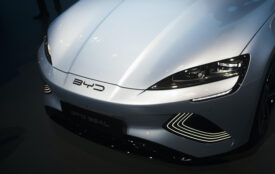Danger from China: How Europe’s wind energy sector can protect itself
Chinese manufacturers are flooding the global markets with cheap solar technology. Numerous European competitors are on the brink of extinction. Is the local wind industry facing the same fate in the long term? “The danger is growing,” comments Markus W. Voigt, CEO of the aream Group. “However, there is a way for European manufacturers to maintain their position.”
Until 2010, the manufacture of photovoltaic modules was still a competence of German and European companies. But these high hopes have been dashed. The International Energy Agency estimates that almost all global production will soon come from Chinese manufacturers. The reason is simple: a solar module produced in China costs around half as much as a module produced in Europe – with similar quality.
European manufacturers of inverters had a similar experience. Initially, it was said that they had a major technological advantage over Chinese producers. Chinese dominance was therefore not to be expected in the coming years. “That was too optimistic,” says Voigt. Today, China’s top five inverter manufacturers – Huawei, Sungrow, Ginlang Solis, Growatt and Goodwe – have a global market share of over 70 percent.
Is the same thing now happening in the wind sector? Companies such as Vestas, Siemens Gamesa and GE Renewable Energie are still very relevant market players, explains Voigt, but the Chinese Goldwind is continuing to catch up, including in Europe. One reason for this: “The service performance of European wind turbine manufacturers is becoming increasingly unreliable and poor, so that the ‘good service’ argument is less and less able to justify the price differences in the purchase,” explains Voigt. As a result, European companies could fall behind Goldwind, which already offers its turbines well below the price of the established manufacturers.
What can be done? “Nothing is lost yet,” says Voigt, “but the established manufacturers must be careful not to lose their leading position here.” In principle, European investors appreciate “Western” quality and, above all, good service and are therefore still patient. “They are hoping for an improvement in installation quality and after-sales service soon, including for full maintenance contracts,” says Voigt. However, past experience shows that investors’ patience cannot be relied on for too long. “The market environment can change very quickly,” warns Voigt. “In five to ten years, everything can look very different.”








